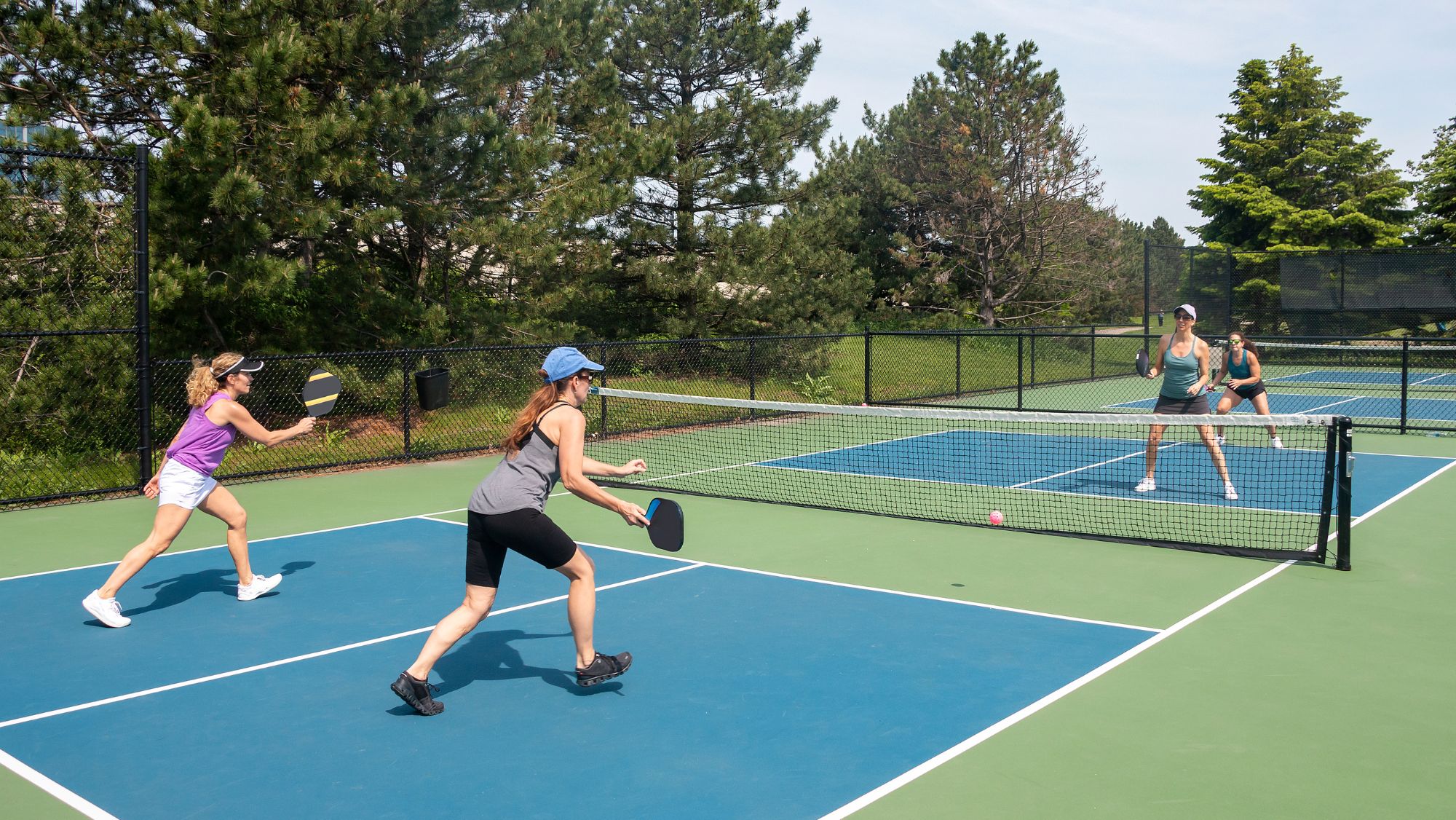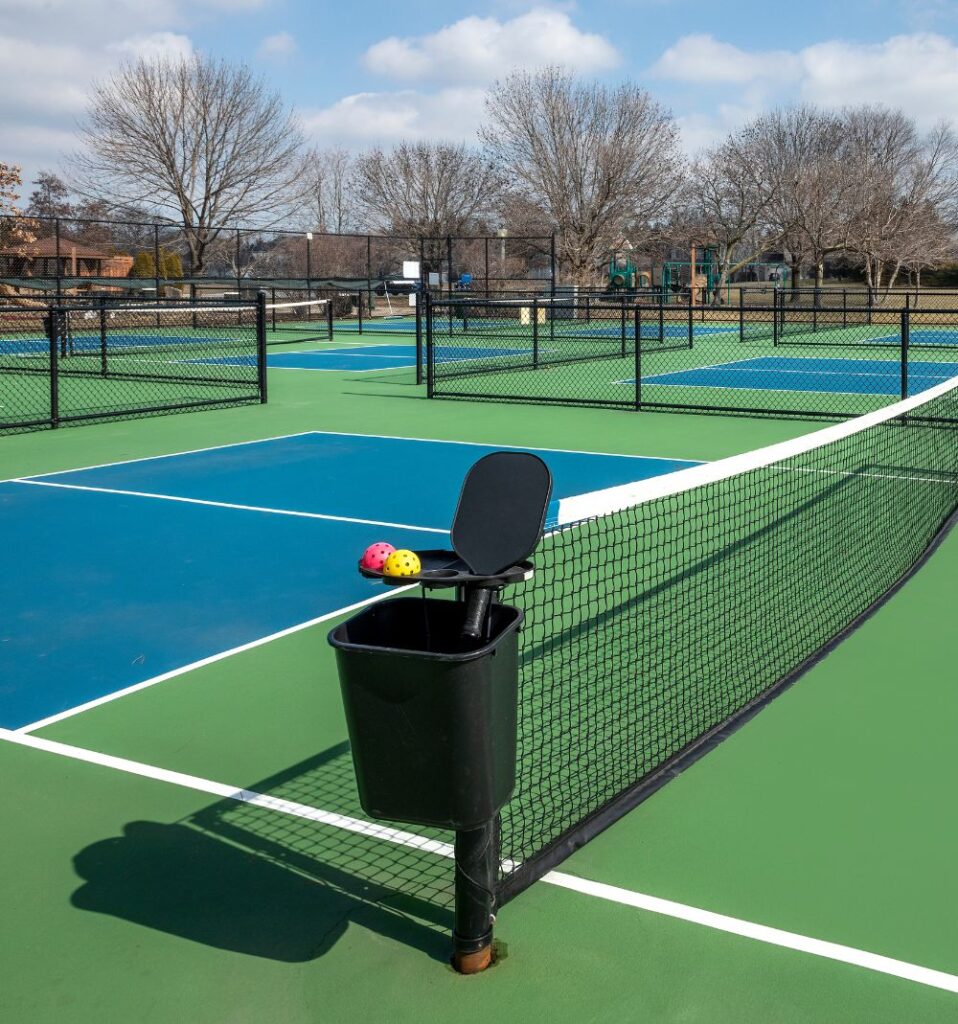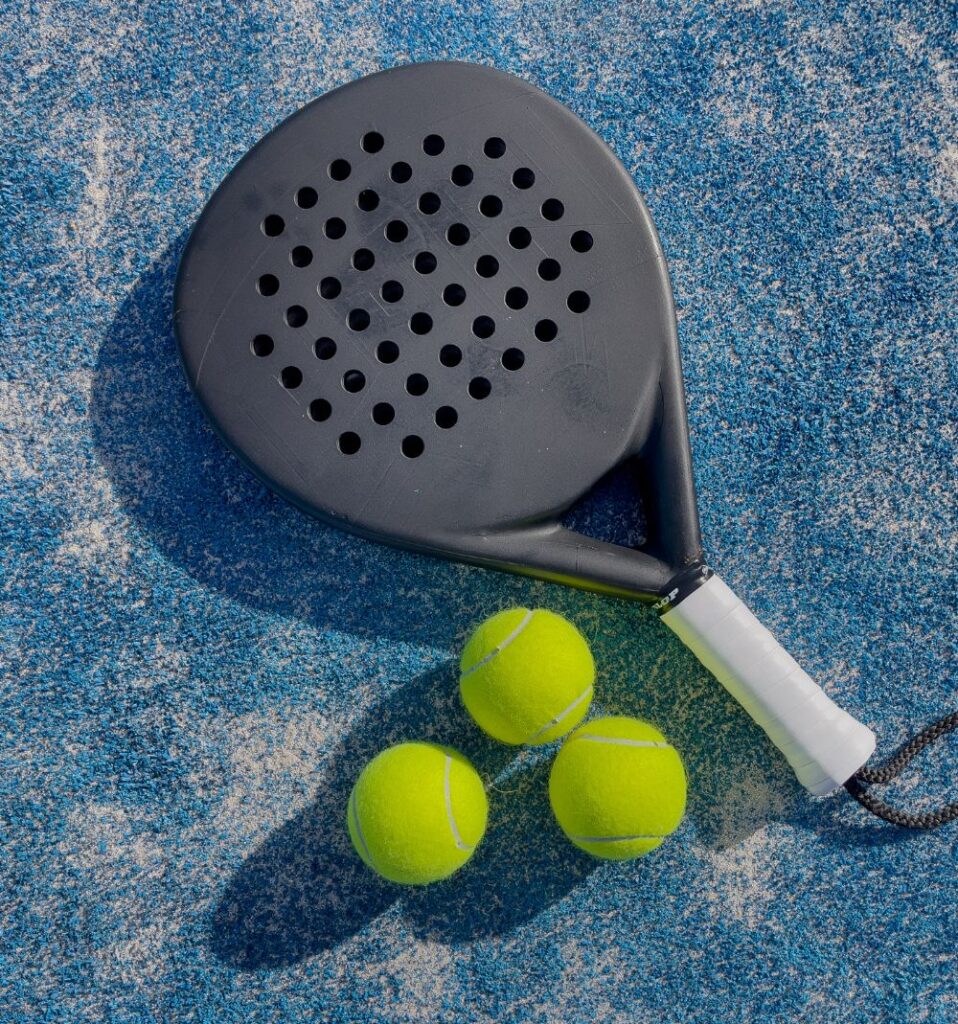
Pickleball and Padel are two of the fastest-growing sports in the world, attracting players of all ages and abilities. Whether you’re a beginner trying to decide which to try or a tennis player looking for a new challenge, understanding the key differences can help you make the right choice for your playing style and fitness goals.
In this guide, we’ll explore the basics and compare pickleball vs Padel in terms of court design, equipment, rules, gameplay, and who each sport is best suited to. At Bluecoat Sports in Horsham, we offer purpose-built pickleball courts available for hire, along with classes for players of all skill levels.
Book online or contact our team if you have any questions about our courts or membership enquiries.
Pickleball vs Padel: Key differences explained
Origins and concept
Pickleball was invented in 1965 on Bainbridge Island, USA, by three fathers creating a game for their children. Blending elements of ping pong, tennis, and badminton, it’s played with a solid paddle and a perforated plastic ball on a badminton-sized court with a slightly lower net. Known for its simplicity and accessibility, it suits players of all ages.
Padel, or padel tennis, began in Mexico in 1969 and quickly gained popularity in Spain and Latin America before becoming a global sport. It’s played on a smaller, enclosed court with glass walls and wire mesh that keep the ball in play and add a strategic, fast-paced dimension.
Both sports are typically played in doubles, but padel’s wall-based gameplay demands quicker reflexes and greater physical effort.
Court size and layout
One of the biggest differences in Padel vs pickleball is the court itself. Pickleball is played on a court the same size as a doubles badminton court, measuring 20 feet (6.1 metres) by 44 feet (13.4 metres). The court includes a non-volley zone (also known as the kitchen) near the net, which players must avoid when volleying the ball. This rule adds a layer of strategic thinking and encourages longer rallies.
Padel is played on a slightly larger court enclosed by glass walls and wire mesh. A standard padel court measures 10 metres (32.8 feet) by 20 metres (65.6 feet). Players are encouraged to use the walls to keep the rally going, similar to squash. The presence of walls adds depth to the gameplay, allowing for creative rebounds and requiring strong court awareness.
Another subtle difference is net height – pickleball nets sit slightly lower at 86 cm, while Padel nets are 88 cm high at the centre, contributing to each sport’s distinct rally style.

Equipment and materials

Pickleball:
- Solid, stringless paddle from composite materials (graphite, carbon fibre, or polymer).
- Smaller than a tennis racket.
- Lightweight plastic ball with holes; low bounce, designed for control.
Padel:
- Solid, stringless racket made from fibreglass, carbon fibre, or EVA foam.
- Surface typically includes holes to reduce air resistance.
- Ball resembles a tennis ball but is slightly less pressurised for a lower bounce and better rebound off glass walls.
Both sports use specialised equipment suited to their unique gameplay. Pickleball favours control and ease of use with its slow, perforated ball and compact paddle. Padel requires a sturdier racket and a more responsive ball, offering a blend of tennis-like familiarity with added speed and wall-based strategy.
Basic rules and scoring
Despite some visual similarities, pickleball and Padel have different rules and scoring systems.
Pickleball
In pickleball, games are typically played to 11 points, and a team must win by at least 2 points. Only the serving team can score points. Serves must be made underarm (below the waist) and diagonally into the opponent’s service box. One of the most distinctive rules is the two-bounce rule, which means the ball must bounce once on each side of the court before volleys are allowed – this encourages longer rallies and more strategic play.
Padel tennis
Padel uses the same scoring system as tennis: 15, 30, 40, and game. It is most commonly played in doubles, and serves must be made underarm, with the ball bouncing once before hitting the opponent’s service box. A unique feature of Padel is that players may play the ball off the glass walls after it has bounced on the ground, adding a dynamic element of strategy and spatial awareness.
Gameplay and playing styles
Pickleball is known for being easy to learn and ideal for beginners, older adults, or anyone seeking a sociable, accessible game that still offers a good workout. The smaller court and slower-moving plastic ball contribute to longer rallies, with gameplay that often rewards placement, patience, and strategy over raw power.
Padel, by contrast, is typically faster-paced and tends to attract players with experience in tennis or other racket sports. The enclosed court and incorporation of glass walls add a layer of complexity, requiring a mix of agility, tactical awareness, and quick reflexes. Rallies in padel often involve sharp angles, volleys, and creative rebounds, making it both physically demanding and highly engaging.
Accessibility and skill levels
Pickleball is among the most accessible racket sports, suitable for all ages and abilities. Its smaller court, slower ball, and lower net create a gentle learning curve, making it ideal for beginners.
Padel is also beginner-friendly but can be more challenging at first due to the use of walls and a faster pace. However, it’s a popular choice as a dynamic, tennis-style game in a compact, enclosed court.
Pickleball vs Padel comparison table
| Feature | Pickleball | Padel |
| Court size | 6.1 m x 13.4 m (badminton-sized court) | 10 m x 20 m (enclosed court with glass walls) |
| Court layout | Open or indoor court with no walls | Enclosed with glass walls and wire mesh |
| Net height | 86 cm (at the centre) | 88 cm (at the centre) |
| Ball used | Perforated plastic ball (wiffle ball) | Pressurised tennis-style ball |
| Racket | Solid paddle (composite materials) | Solid racket with holes (no strings) |
| Play format | Singles or doubles | Primarily doubles |
| Serve rules | Underarm serve; rally must include one bounce on each side before volleys are allowed | Underarm serve; ball must bounce in the service box before return |
| Walls in play | No | Yes – the ball can rebound off walls after bouncing |
| Scoring system | First to 11, must win by 2; only serving team scores | 15, 30, 40, game |
| Gameplay pace | Slower, strategic, more accessible | Fast-paced, requires agility and quick reflexes |
| Accessibility | Very beginner-friendly, suitable for all ages | Best for those with some racket sport experience |
Which sport is right for you?
Choosing between Padel and pickleball depends on your preferences, fitness level, and the experience you want. If you enjoy fast rallies, wall play, and a more intense workout, padel could be your game. For something easier to learn with lower joint impact, pickleball is a great choice.
Both sports are fun and social, and they improve coordination. Whether you prefer padel’s challenge or pickleball’s beginner-friendly style, you’ll stay active, engaged, and entertained.
Book a court at Bluecoat Sports
At Bluecoat Sports, our high-quality pickleball courts in Horsham are available for hire or for booking a class, perfect for players of all skill levels. We’re also excited to be expanding our racket sport offering with the launch of four state-of-the-art Padel courts in the near future.
Check back soon for updates and announcements, and if you’d like to play pickleball on our courts, you can book online or get in touch with our team with any questions.